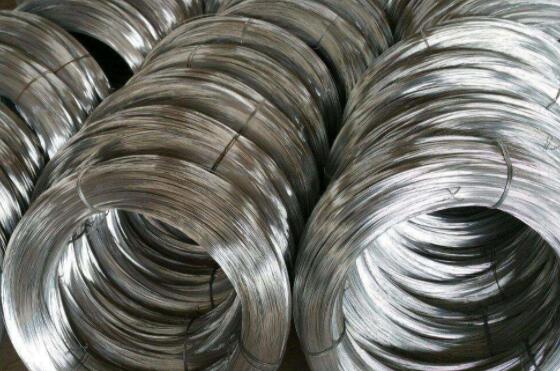The large roll of galvanized wire is violently extinguished in oxygen and sparks radiate, while the sodium block and magnesium bar are extinguished in oxygen and no sparks radiate. This phenomenon is determined by the composition of large rolls of galvanized wire. The large rolls of galvanized wire used in the experiment are pig iron or steel wire, both of which are alloys of iron and carbon (complex substances containing the elements iron and carbon). When the carbon in galvanized wire is extinguished, carbon dioxide will be produced, and the solid will be changed into a gas, and the volume will shrink rapidly.
Galvanized wire can be seen as iron wrapped in carbon, when extinguished, the surface is comparable to shallow carbon can contact with oxygen, produce carbon dioxide gas, will wrap it in iron (this is a molten state) radiation in. The more carbon there is in the galvanized wire, the more likely it is to spark. The iron-encased carbon is like dynamite in a dynamite bag, blowing the iron away from time to time.
Sodium and magnesium contain less combustible impurities, and when extinguished, they simply glow. Galvanizing belongs to the electrochemical processing process which is widely used on the surface of steel. So it is, first of all, because zinc coating (especially after supplementary processing, such as chromate treatment and phosphating) resistance to atmosphere and water is more stable, and the galvanized process itself this is cheaper and simple.
Zinc coating on steel and ferrous metal plays an anodic role, it is commonly used for those parts subjected to atmospheric or water action, but zinc coating only when the water temperature below 60℃, the anode properties. When the temperature is higher, the potential changes and the zinc to iron becomes the cathode. Therefore, for parts subjected to hot water (such as steam boilers), the zinc skeleton must be approximately 70 microns thick and void free. For parts subjected to low or normal temperature or atmospheric action, zinc coating without pinholes is not necessary.
The electrolytic deposition of large roll galvanized wire zinc-chin layer is basically the following two kinds of electrolyte: zinc is mainly in the form of zinc cation hydration in the solution; Zinc is mainly present in solution as complex anion. Acid electrolyte belongs to one class, complex cyanide and zincate electrolyte, and nickel sulfate electrolyte constitute the second class. Cyanide electrolyte and acid electrolyte are of great significance.
Post time: 27-02-23


















